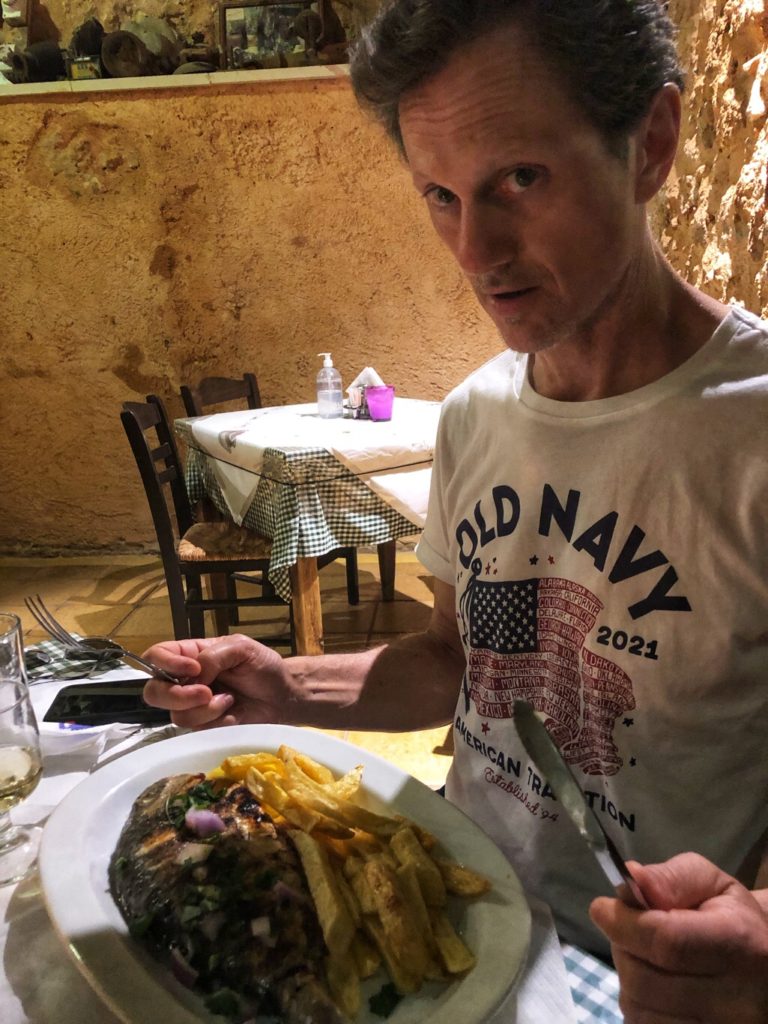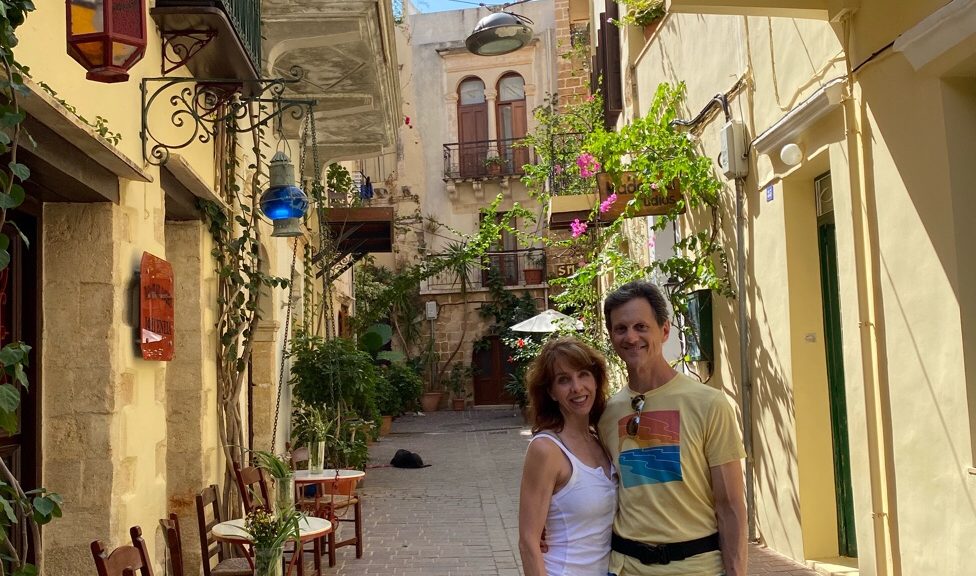It is 4:22 in the morning in Chania, Crete and I am sitting on the roof in my Airbnb in the Old Town wrapped in a blanket while writing this blog. The nighttime lights of the city are my view but the city itself is asleep. I have the whole place to myself. Can’t sleep – needed to write.
We arrived in Chania very late via a ferry and a way-too-close-to-missing bus ride. Chania is a city in the northwest of Crete and the one that, per my research, is a good place to explore the island for a first-timer. There is a long, sometimes sordid history of the city. The influence of multiple cultures can be seen in the architecture here – Mycenaean, Roman, Turkish, Venetian. More to come here…
We’d booked a local guide for a 4-hour tour for a few reasons. First it is a way to get to know the city from the eyes of a local. Second you get to see parts of the city that you’d never see on your own. Third, you learn the history of the city that you cannot get from a guidebook. And fourth, you get to pick his brain on the right places to go – recommended tours, restaurants, the best place for a sunset view – you get the idea.
We met Antonis at the Municipal Market on the edge of the Old Town in Chania. This impressive market was completed in 1913 and was supposed to bring all of the needs of the people into one place – fishmongers, butchers, fruit and vegetable stalls. It has since turned a bit to tourism but this is still a place the locals go to buy their fresh food.
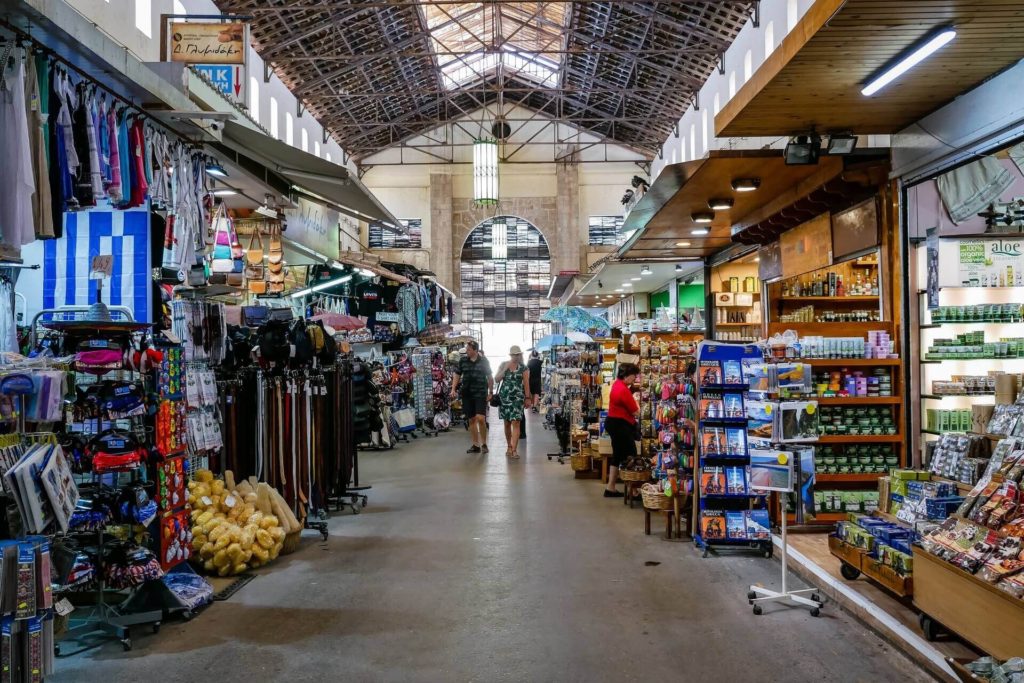
We stopped at a cheese stall where we tried a bunch of different Cretan and Greek cheeses as well as Cretan honey, olives, figs and the infamous Raki. The cheeses – the most unique one called Mizithra – is a soft white cheese that looks similar – but DOES NOT taste similar – to cottage cheese. The Greek people use this cheese in many dishes – from spaghetti to the Greek dish called Dakos that we’d had in Paros.
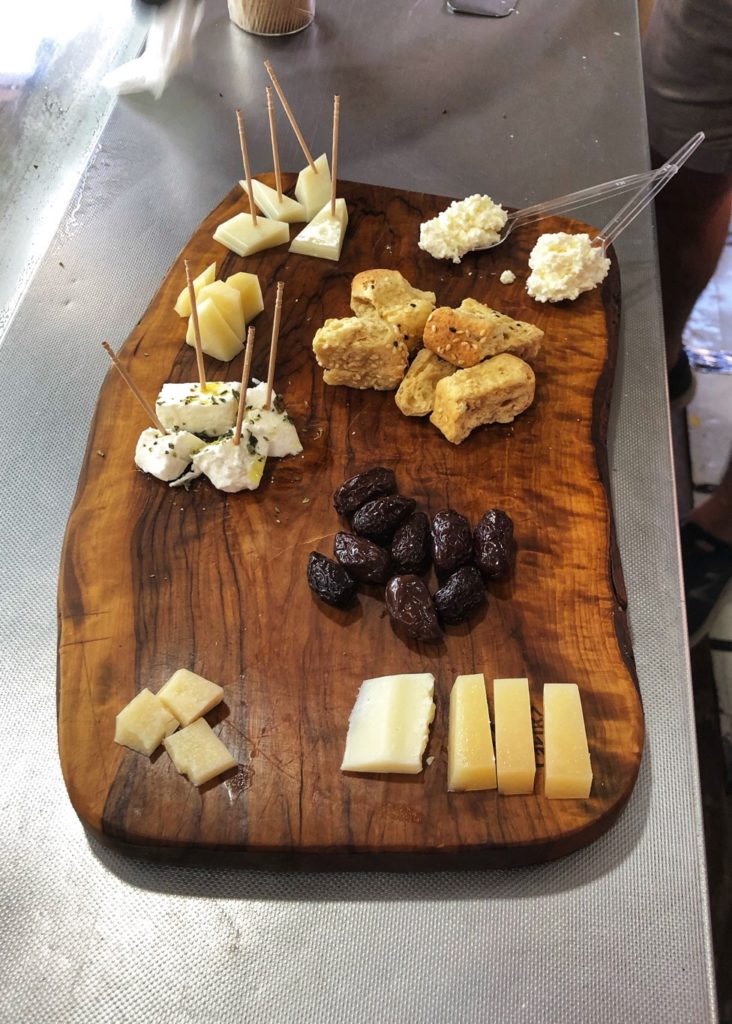
Raki is the traditional liquor of Crete. It is also called “Tsikoudhia” and it has Turkish roots. It is made of grapes boiled in a cauldron. It is clear and some say similar to Ouzo or Souma from Paros. It is consumed as a symbol of friendship on this island and it is considered rude to not be offered a glass when visiting a Cretan home. You can drink Raki straight or with honey, or with another fruit. The one we tried was with honey. Oh it was like a nectar! Very sweet and did not taste of alcohol at all. Even John liked it! We’d definitely have to try more of it.
Our next stop on the tour was to try another local traditional dish – bougatsa. Bougatsa is a traditional Greek pie filled with cheese or custard and then folded into super thin phyllo pastry. It is typically served for breakfast with coffee. We went to one of the oldest – and arguably the best – bougatsa cafes in the city – Bougatsa Chania. This was a dish that was on my list to try and it did not disappoint. Ours was filled with soft cheese and then sprinkled with sugar. A little savory and a little sweet if you will!
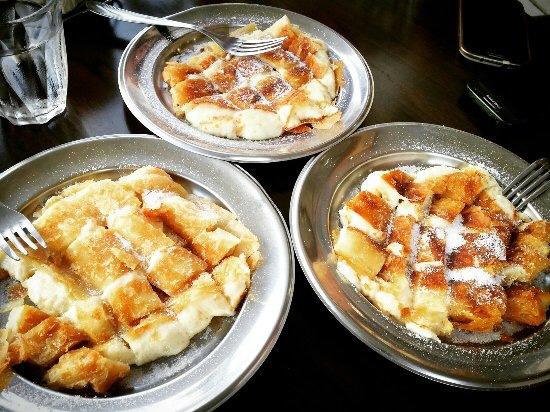
We made our way from the new part of the city into the Old Town – the most famous area of the city and a big draw of tourists. There is so much history seeped in this area of the country that I could not even begin to do it justice. So I’ll link to a place that can. We strolled through old gates into the Old Town where we saw the West Moat and the bastions that protected the city. We’d stop every few meters or so to hear more stories about the history of the area from Antonis.
Once inside the Old Town it is very touristy. However, the old Venetian architecture remains so it is also gorgeous. There are rows upon rows of alleyways were you can get lost, shop, have a coffee, watch the world go by, whatever you like. We wandered through some of the more touristic areas and then to some of the back alleys were locals actually live. We learned about famous churches, monasteries, wars, sieges, real estate, culture, coffee – you name it!
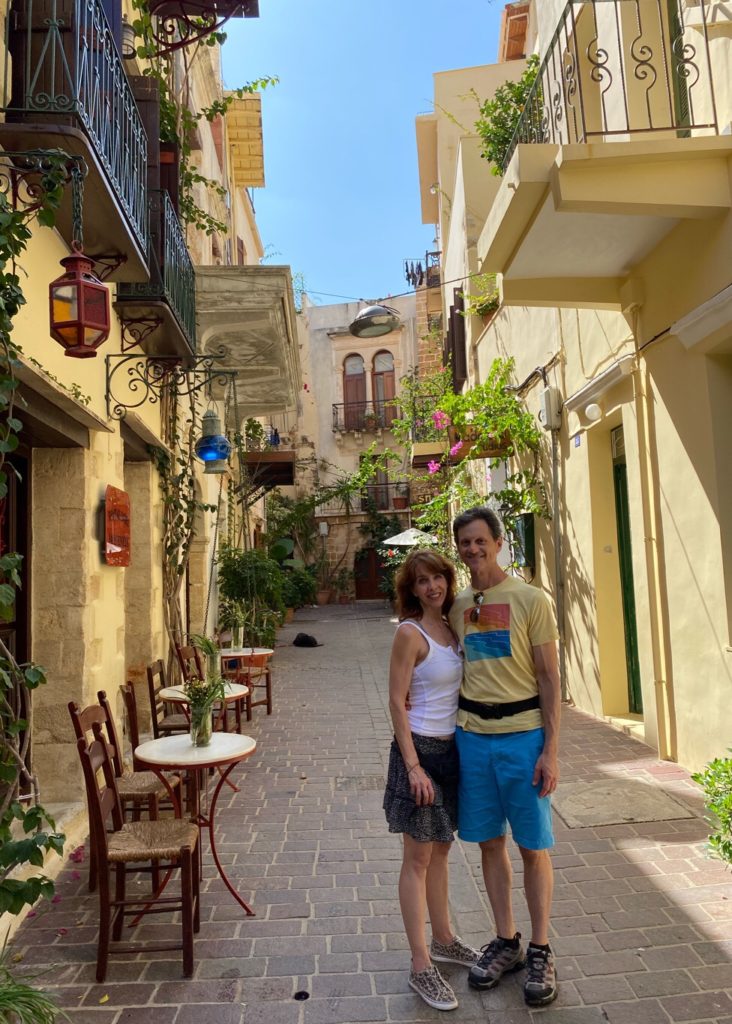
We finally made our way down to the famous Venetian port of Chania. This is definitely where all of the tourists are – but you can see why. The charm of this place is incredible! It is divided into the western basin and the eastern basin. The western basin is the source for all of the photos of the Chania port – lined with cafes and shops with very few boats. The eastern basin is where boats are docked and is also the location of the dockyards. Also called Arsinalia, these were used to repair ships and were built in the 16th century. They were originally open to the sea so that the boats could pull right in but have since been closed off to the water. These are stunning pieces of architecture that you have to see!
During our chats with Antonis he had mentioned a place that the locals know about and go to watch the sunset. Antonis called it the Squat. It is a squatted social center called Rosa Nera right in the heart of the old town. You have to walk up a set of “donkey steps” to get there. And it’s nothing fancy – just a big open area that sits high above the city. You can look down on the old Venetian port from here and see way out into the sea. We would definitely be back here for sunset!
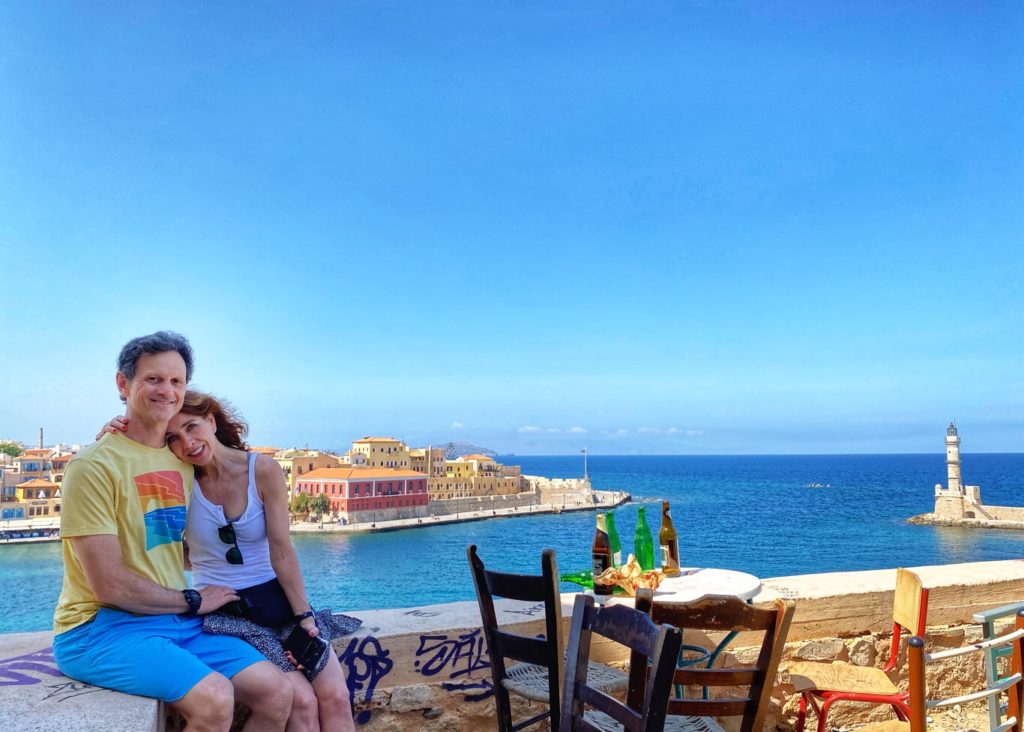
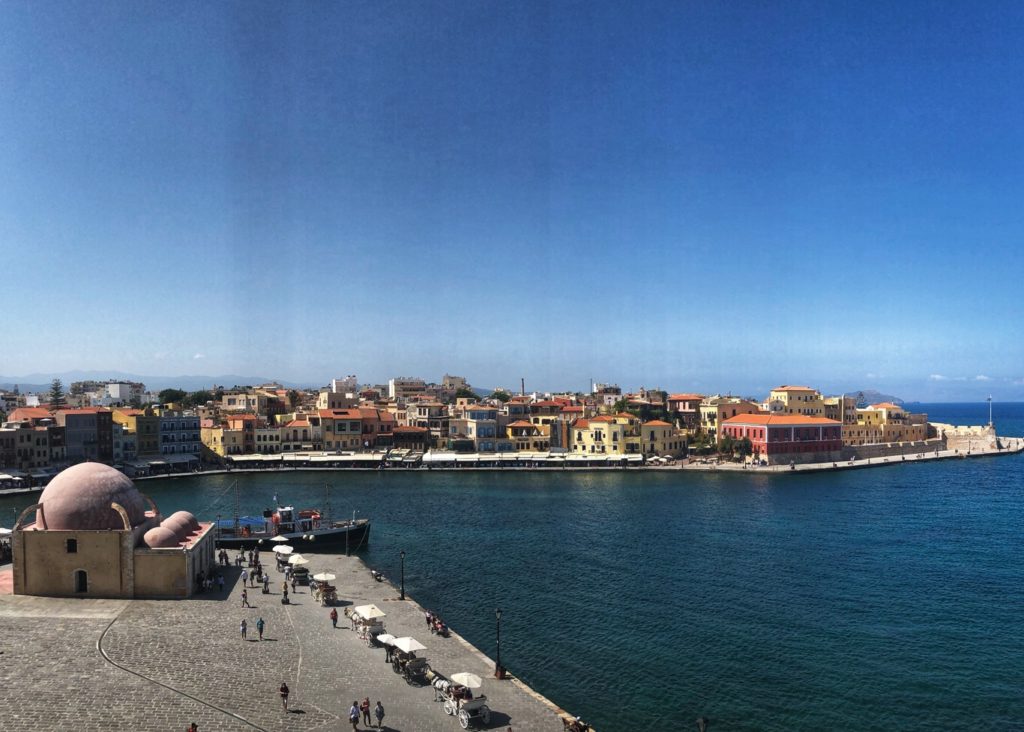
We continued our walk and talk and ended up at the Chania municipal garden – an area of green very close to the Old Town. There is a super impressive Ficus tree here and also some Cretan goats. We sat and had a coffee at Kypos cafe. This cafe was built in 1890 and the Greek coffee is served in the traditional style – not in the cup but in the Greek briki. Once served the consumer pours from the briki into the cup. John loved this! We also tried a traditional dessert called Ekmek Kaitafi – a custard, cream and syrupy shredded pastry with “ice cream”. Yum!
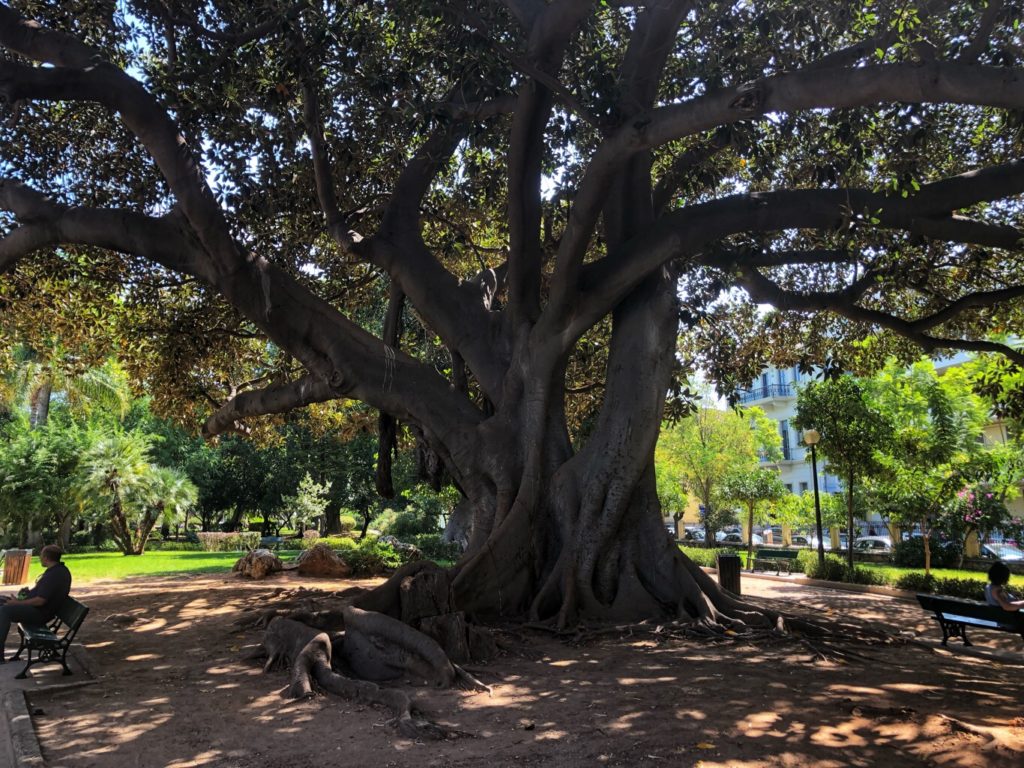
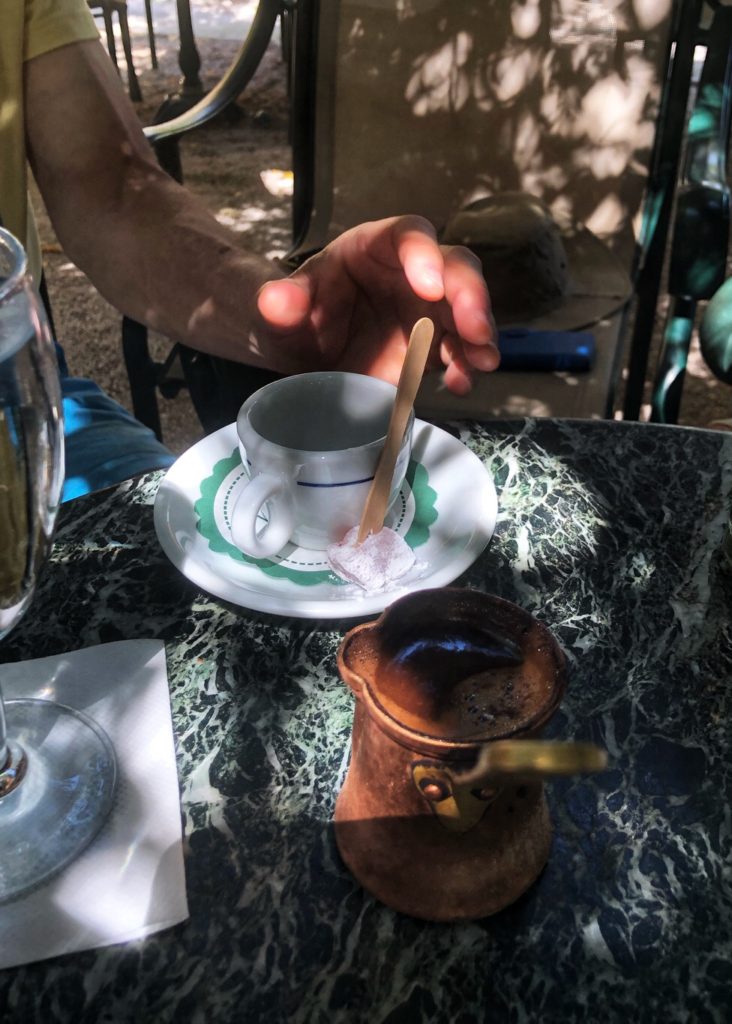
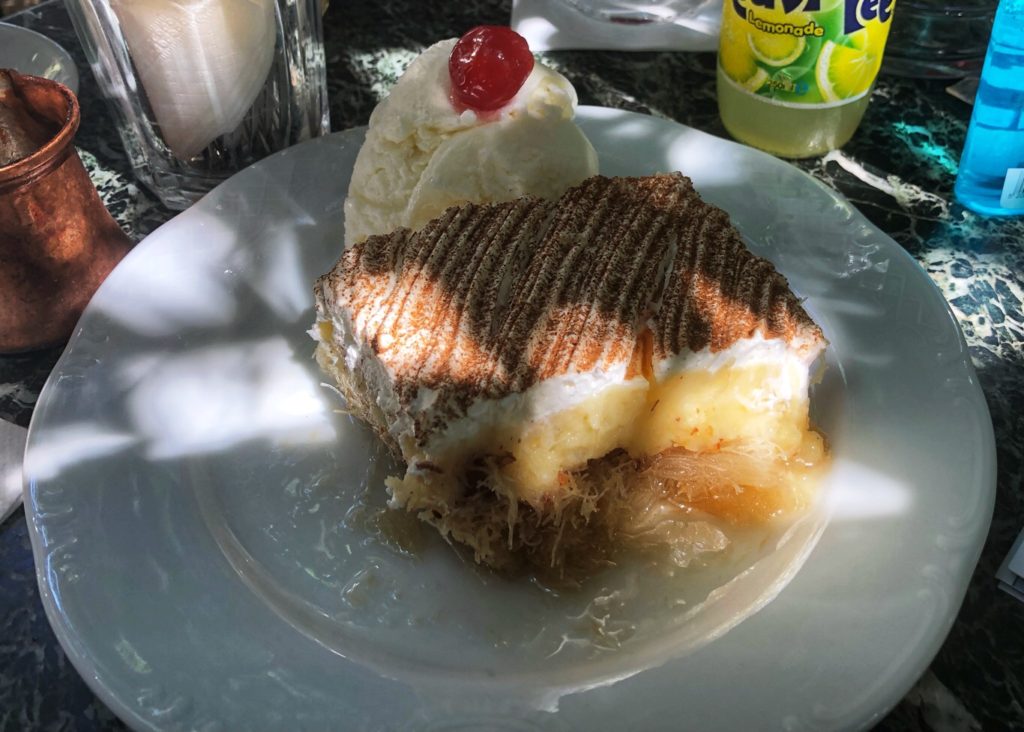
We finished our tour with Antonis at a traditional souvlaki “window” called Oasis. There is no place to sit here and no other item on the menu. It is a gyro – or souvlaki – served with pork, tomatoes, onions and yogurt. Messy and simply delicious!
What a great tour with Antonis! We learned a TON and really enjoyed his company. As I get older I really do appreciate learning from locals. It is such an important part of our holiday!
John and I decided to stroll around the Old Town after our tour – maybe work off some of what we ate?!?? And I definitely wanted to check out the shops. It was leisurely but, man, there are a lot of tourists and it’s the end of September! We had some fun window shopping. This area of Crete is known for its olive oil, wine, Raki, knives, embroidered fabric and leather. Really only 2 of those things are easy to travel with! But it is fun to look and pick up gifts for us and family and friends. The jewelry is pretty great too. I may come home with something pretty…
We finally found a bench right on the port where we enjoyed the view and planned our stay. Once the sun got too hot on our backs we went for a local beer at Corner of Angels – a cafe recommended by Antonis. We got their house beer – I don’t even know what it is but it was delicious.
After a short rest at our Airbnb we made our way to the Squat for sunset. I brought my Souma and we picked up a local beer for John. It was stunning to watch the sun dip below the Venetian buildings on the opposite side of the port. We were gifted with some beautiful colors once the sun went down.
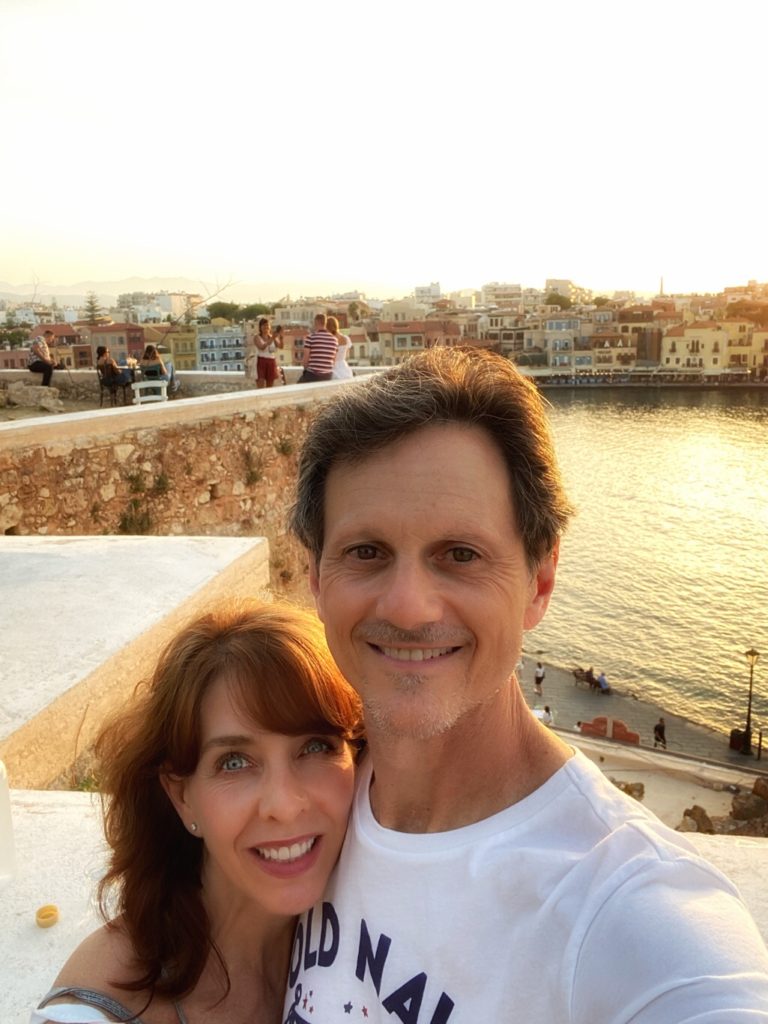
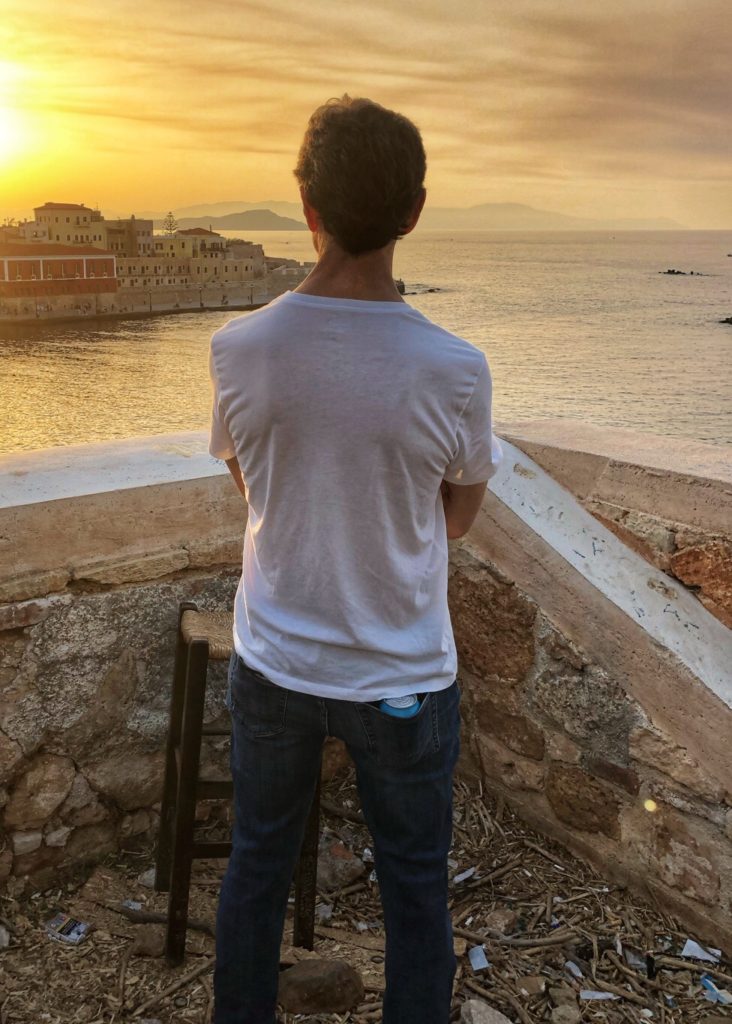
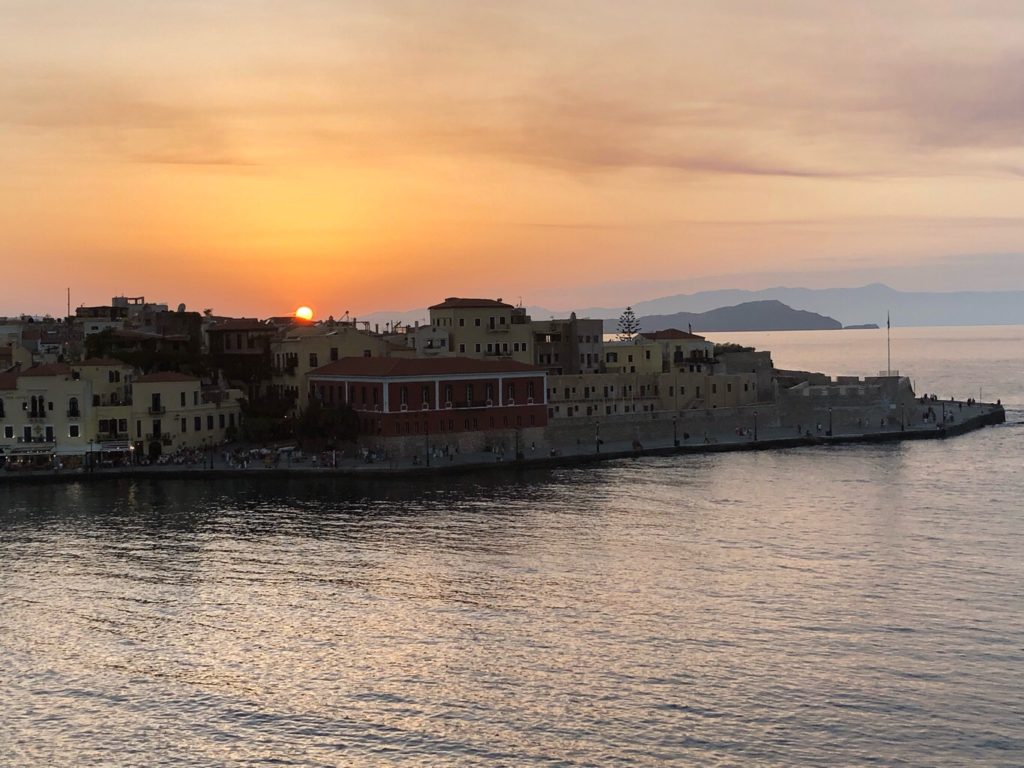
Off to another recommendation from Antonis – Ela Restaurant. The restaurant – as everything in Chania – has a long history. It was built in the Middle Ages by the Jews. It’s been used to make soap, as a school, as a wine store and as a restaurant. It was completely destroyed by fire in 1988. Since then it has been renovated and now serves Cretan traditional food. We both got dishes based on recommendations – bisteka (beef stuffed with feta) for me and sea bream (the whole fish!) for John. We enjoyed a really nice conversation and ended the day hand in hand back at our Airbnb.
